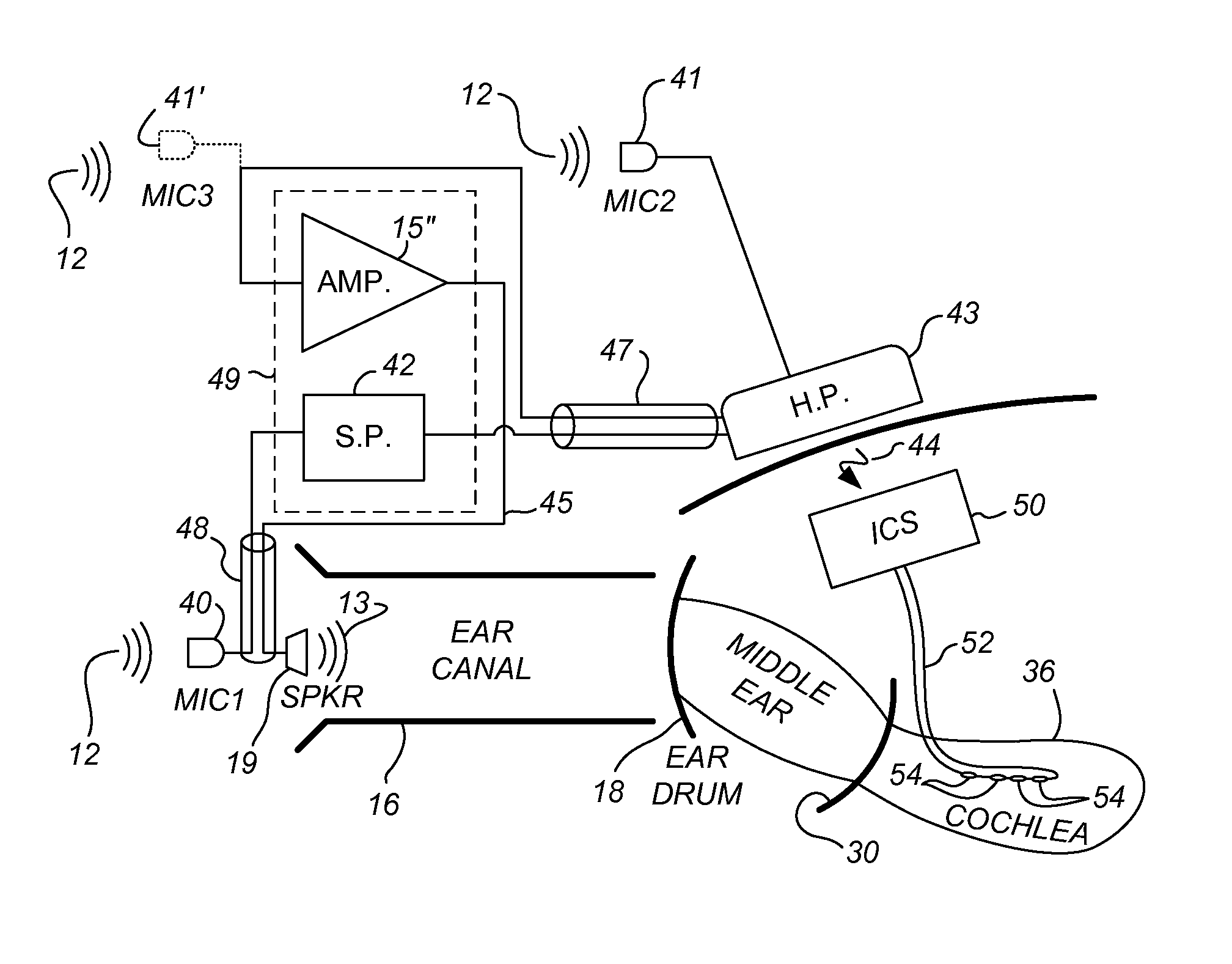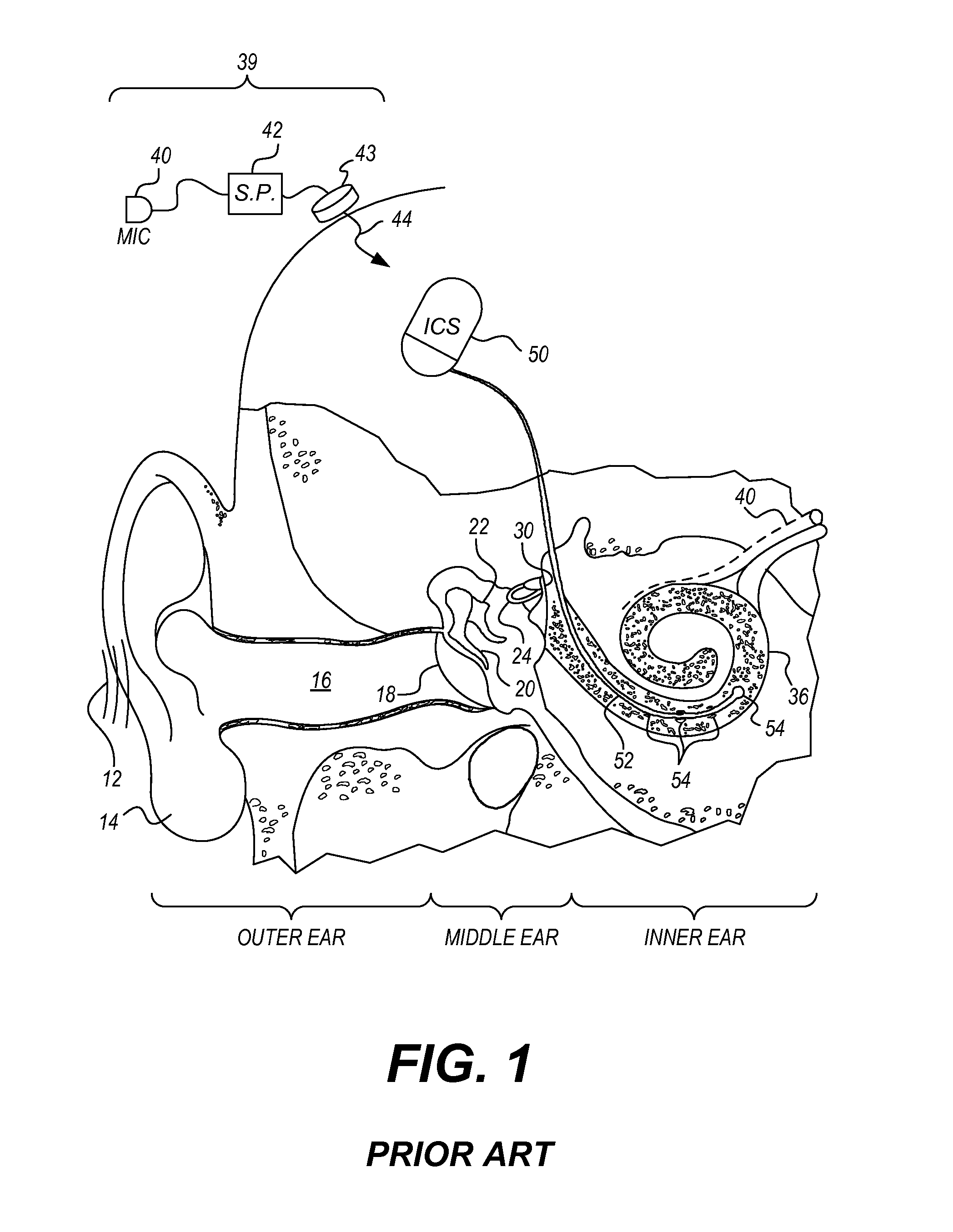Dual microphone EAS system that prevents feedback
a technology of eas system and microphone, applied in the field of hearing aid systems, can solve the problems of affecting hearing aid users, amplification hearing aid system becoming unstable and squealing, etc., and achieves the effect of eliminating unwanted feedback and removing the feedback within the hearing aid portion of the eas system
- Summary
- Abstract
- Description
- Claims
- Application Information
AI Technical Summary
Benefits of technology
Problems solved by technology
Method used
Image
Examples
Embodiment Construction
[0020]The following description is of the best mode presently contemplated for carrying out the invention. This description is not to be taken in a limiting sense, but is made merely for the purpose of describing the general principles of the invention. The scope of the invention should be determined with reference to the claims.
[0021]Turning first to FIG. 1, a system is depicted that uses electrical stimulation of the inner ear to enhance the perception of high frequency sounds, and residual hearing to sense low frequency sounds. The description of this hybrid system (using both electrical stimulation and residual hearing) is presented as background to better understand the operation of the dual microphone EAS system described in more detail below.
[0022]As seen in FIG. 1, the major relevant components of the outer, middle and inner ear are illustrated. To better understand the present invention, it will first be helpful to briefly review the normal operation of a fully functional e...
PUM
 Login to View More
Login to View More Abstract
Description
Claims
Application Information
 Login to View More
Login to View More - R&D
- Intellectual Property
- Life Sciences
- Materials
- Tech Scout
- Unparalleled Data Quality
- Higher Quality Content
- 60% Fewer Hallucinations
Browse by: Latest US Patents, China's latest patents, Technical Efficacy Thesaurus, Application Domain, Technology Topic, Popular Technical Reports.
© 2025 PatSnap. All rights reserved.Legal|Privacy policy|Modern Slavery Act Transparency Statement|Sitemap|About US| Contact US: help@patsnap.com



